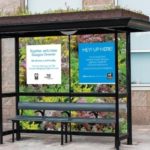Features - Environment
Paperless Planning: Seizing Momentum Post COVID

Paul Beaney is Customer Success Director at DEF Software. In this latest feature, Paul writes about the importance of seizing the momentum after COVID and going paperless
Since the pandemic, the public sector has had to overcome many challenges when providing services to citizens. Whilst Covid-19 has created various difficulties for staff and customers alike, it is important to recognise that the pandemic has extended the opportunity to try something new and push beyond our standard models of governing.
Many councils have started to embrace new digital systems and platforms, out of necessity and with the aim of simplifying processes. Now, we are in a place of momentum with technology, but this could be a delicate balance between striving for continued innovation or returning the ‘the old ways.’ This is none more apparent than when you look to a planning department within the local government where paper applications still exist.
As a result, it is important to continue with a paperless approach in all departments so that these efforts, however unplanned, do not go to waste.
Keeping progress at the forefront of our minds
The advancements made so far have been impressive. The rate at which the local authorities, who were looking to achieve a transition to go paperless and did so, has been staggering. However, we should not stop here.
When councils talk about transformation, it should not merely be limited to overhauling legacy contracts, moving systems to the cloud or building digital citizen portals. This is the digitisation part and it’s the start of the process but far from the end of it.
Paper is really only one strand of this. Transformation can therefore be far more widespread and deep-rooted than first thought, and as a concept this can be potentially overwhelming for staff and council leaders.
Whilst changes or modifications to current structures should be carefully planned, it would be a mistake to fear disrupting the current status quo since this fear will prevent thought expansion and development. Keeping this in mind is especially important as we start approaching something that we can recognise as ‘normal life’. Ultimately, we must embrace Covid-related innovations and ensure we do not return to previous impractical and clunky processes, but instead, continue to build on the efficient and cost effective alternatives we adopted throughout the pandemic.
Why councils should always strive for more
Paper is increasingly pointless, at least in a local government setting. This is largely due to the fact it’s costly, it takes time to fill out and post paper forms, and its production has a negative impact on the environment. This is why for years most have been finding ways to digitise processes that previously required it. For those councils that have started the process towards this, they are on the right course to allowing resources and time to be directed towards helping residents rather than administrative purposes.
In addition, a digitised system is far more flexible and adaptable and can therefore adjust more easily to future challenges. By establishing a strong digital groundwork, councils can also build upon their systems and continue to integrate the newest and most efficient applications, enabling them to support future proofing.
Finally, not only is the drive to use less paper coming from internal pressures, but it’s starting to become a sticking point for outside stakeholders as well, who are frustrated at the time and cost it takes to see a paper application through. It’s important that councils remain accessible for all, and for that reason it’s likely that some form of paper application will be around for a few more years, but the time has come to strive for the option that will create a better environment, improve workflows and set that example to customers too.
Solutions and what the paperless planning system looks like in practice
There are easy to implement solutions that can quickly negate the need for paper. This list is by no means exhaustive, but as a first port of call cloud computing can be immensely useful. If the software is ‘true cloud’, planners should be able to pick up their work anywhere, without the need to print out paper when taking work home or on site.
Automating the whole application process and using online forms can not only save paper, but also help local authorities to record decisions and issue permits, quickly and simply. It mirrors the digitisation already happening for planning applications and no major delays have been reported during the last few months – with applications still being decided within the permitted time frame in many cases, despite the unprecedented numbers of applications being submitted to local authorities
Moving site inspection forms online also has multiple benefits, removing the need for someone in an office to search for the paper case file, select the paper plans they wish to take onsite with them and then have to manually update the record on their return to the office. It also enables the planning officer to take photographs using their mobile device which are automatically uploaded into the back-office system from a remote location.
As an added benefit this also saves the construction company from having to wait until the day after the inspection to try and ring the service, hope that they can get through, and find out whether the site visit was successful.
With a mobile solution, such as Jotter, forms can be filled out onsite on a device removing the need for dual entry. It also means that all forms are available at the touch of a button, so they can’t be ‘forgotten.’
Why we must maintain this approach
Seizing the momentum after Covid-19 and continuing the efficiencies it has provided is essential, as we don’t want local government bodies to fall behind in this digital age.
Fortunately, what we have been starting to see is a sea change affected by the next generation of employees and leaders, some of whom have more experience with digital tools. This may be because they are more ‘tech native’ or eco-conscious, but primarily it’s a want driven by the benefits that digital correspondence and form filling brings.
Continuing upon these improvements, primarily by eliminating paper trails and going digital, as well ensuring all councils across the UK improve in tandem, will only further develop the local government services, offering a more supportive experience for staff and a more accessible one to customers.
If you would like to read more stories like this, then please click here
Related Articles
More Features
- The renewables revolution in the Scottish Highlands
25 Feb 25
The Highlands are at the heart of a transformative renewables revolution, poised to lead a
- Government correct to head off Climate and Nature Bill
7 Feb 25
The ‘Climate and Nature Private Members’ Bill’, seeks to set new legally binding targets for
- How boosting sustainability bolsters resilience and creates a competitive advantage
10 Jan 25
Emma Fitzgerald, UK and Ireland defence director at AECOM, explains how making sustainable changes to






